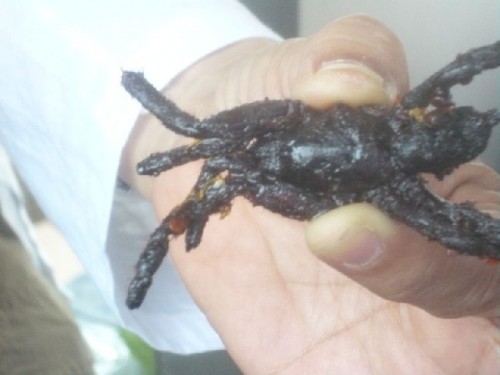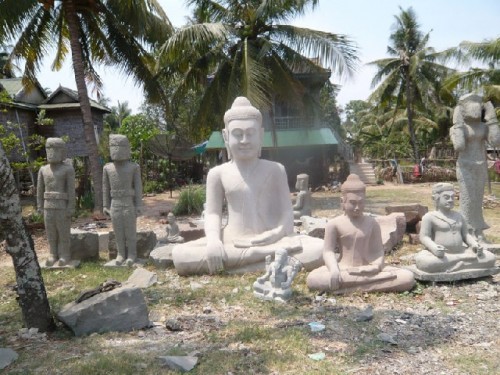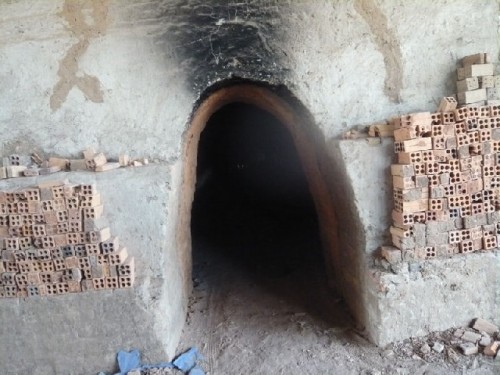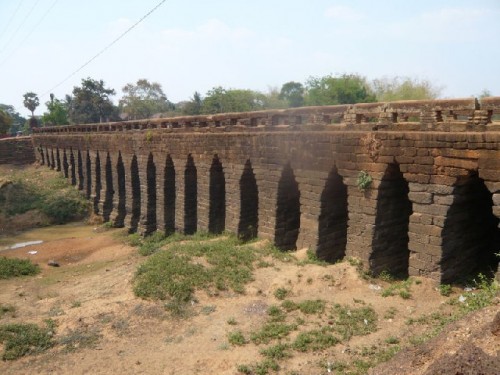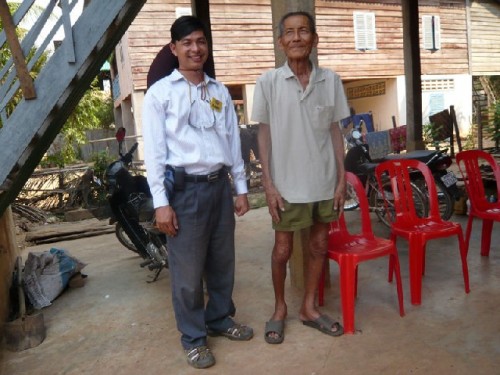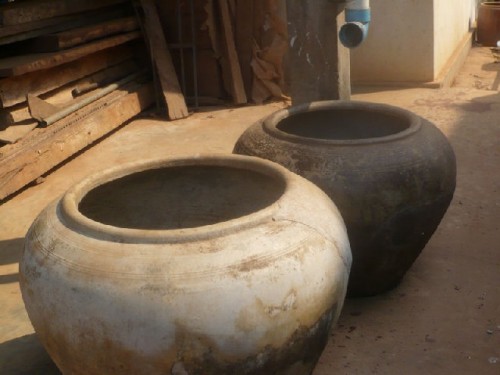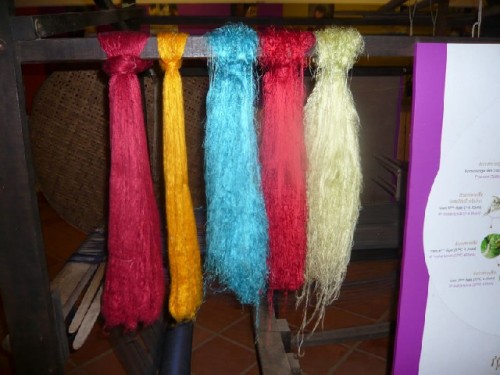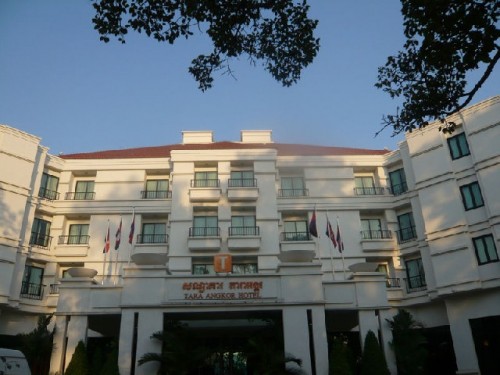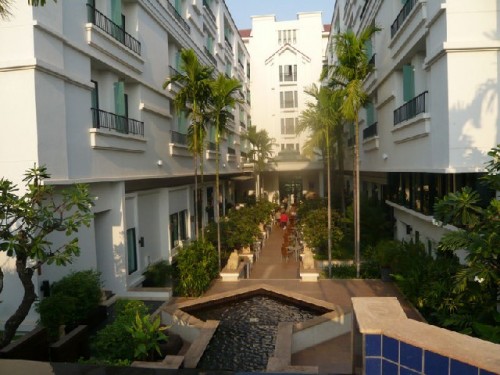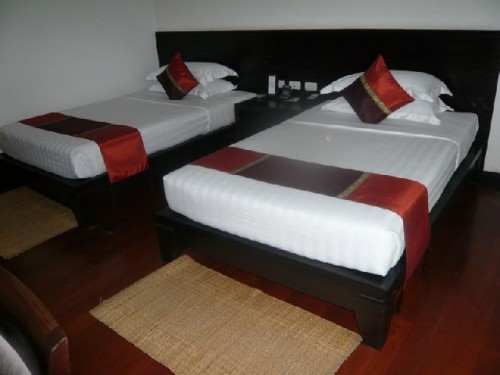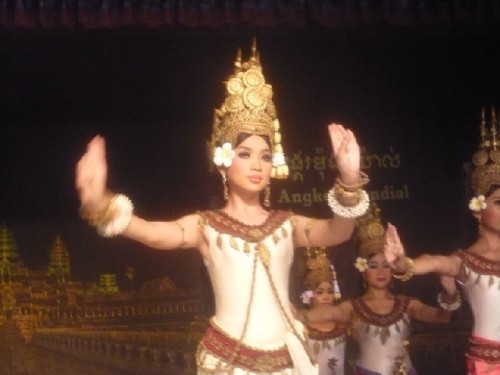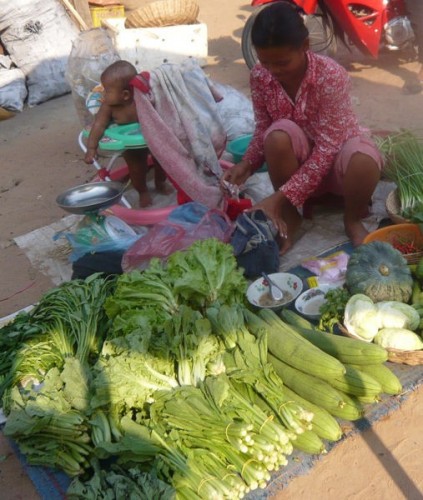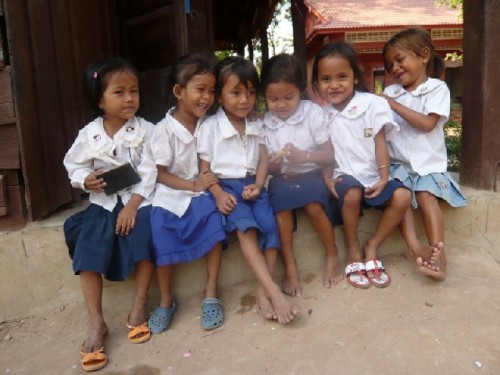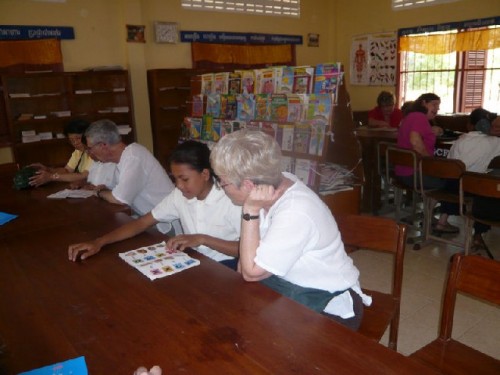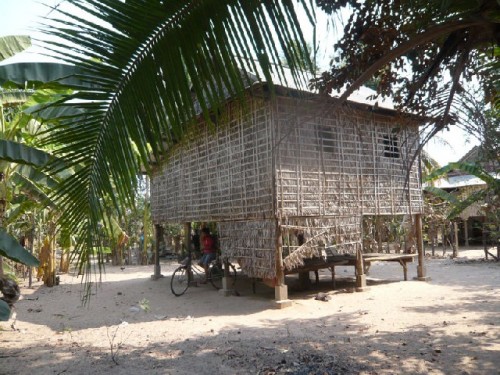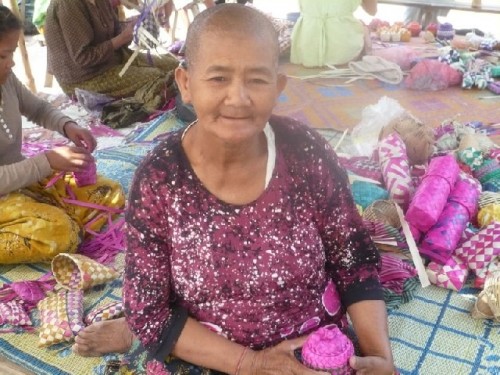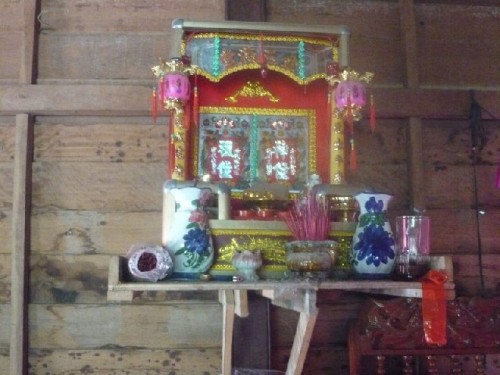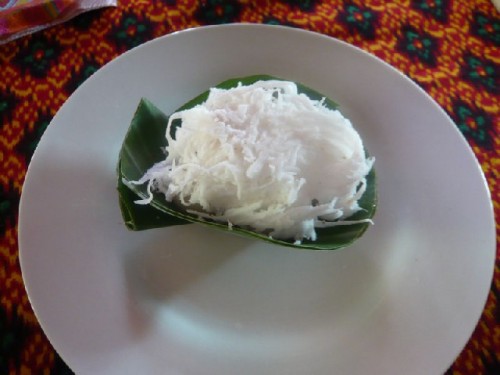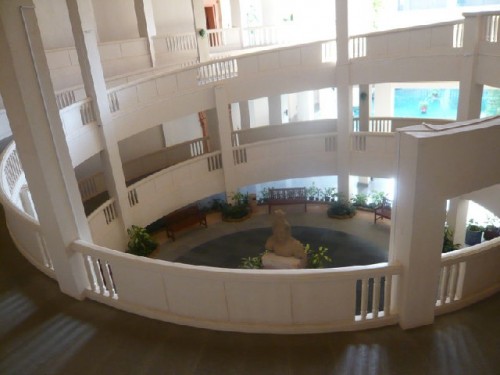Cambodia: Part Two
Siem Reap
By: Zeren Earls - Sep 21, 2010
Another local guide, Sang, joined us for the next leg of our trip, to Siem Reap, 195 miles northwest of Phnom Penh. The overland journey across the plains took us eight hours, with numerous stops at points of interest. Though the road was paved, our pace was slow because of speed limits, giving Sang the opportunity to talk about the changes that have taken place in the last twenty years.
Cambodia defines itself as a multi-party democracy under a constitutional monarchy. The king ratifies the laws, but has no power to rule; his role is mostly humanitarian. Three leaders — the Prime Minister, his Deputy, and the Speaker of the 124-seat Parliament — rule the country. Each parliamentarian, representing 20,000 people, is elected to a five-year term. Over 50% of the population is under 20 years of age; therefore, only 8 of the 14.5 million are eligible to vote. In the last election, in 2008, the Cambodian People’s Party (CPP) received the majority of the votes among the eleven participating parties. The CPP, while providing the stability of one-party rule, has limited freedom of expression and disallowed demonstrations.
Traveling through the rural landscape, we passed by lotus ponds, rice paddies, tall haystacks, cows in brown fields, heaps of pumpkins, chili peppers spread on straw mats, shacks with hammocks, sugar palms, as well as banana, cashew, coconut, and mango trees. We stopped at a local market to buy a lotus plant, selecting carefully one without any brown leaves, as the fruit is eaten before the leaves turn brown. In Buddhism the different states of the mind are compared to the different levels of the lotus plant. One is asked, “Are you above the water, blooming like a lotus, or are you in the mud?”
Buddhism is the state religion. Ancient temples are visited by pilgrims or tourists. There is a new temple for every two or three villages; communities raise funds to build their temples, which are mounted on stilts and covered with tile roofs adorned with naga tails. The multiheaded, hooded water snake called a naga in Khmer mythology, controls the rains and brings prosperity.
In Punching Provence on the lake, we enjoyed roasted lotus seeds. Other local delicacies in the market were tarantulas and crickets. Dipped in a batter of flour, garlic, sugar, and salt, they are deep-fried and sell for 25 US cents each in the case of tarantulas, 50 cents for 30 in the case of crickets. Tarantulas are dug out or pulled out of their holes with an instrument and killed by pressing the stomach. Attracted to light, crickets are trapped by suspending a sheet of plastic over a pool of water, so that they fly into the sheet, fall, and drown. Locals eat almost anything available: grasshoppers, banana and silk worms, lizards, and cobras. The latter go in whisky bottles for good eyesight, energy, and similar benefits.
Walking by a grove of cashew trees provided for another discovery. The cashew nut grows on the outside of its red fruit, which resembles a small apple. Most of this produce is shipped to Thailand for processing, though we did taste some delicious cashews processed in Cambodia, which is also rich in rubber. It was the country’s rubber plantations that attracted the French, who were competing with the British to colonize Indochina.
The “Stone Carvers’ Village” near a quarry had many stalls displaying sandstone works in various shades from beige to gray. Here I bought a figurine of Apsara, the mythical celestial dancing girl. At the “Brick Makers’ Village” we were greeted by many children and guided to the mud oven, where bricks are loaded and sealed for three days to bake. We distributed durian-flavored cookies as treats to the children. Our lunch stop by the lakeside was delightful, with coconut juice served in its green shell, accompanied by an ample spread of pork with ginger, fish and chips, beef with fried eggs, noodles with vegetables, and stir-fried vegetables. For dessert we enjoyed pomela, a fruit resembling grapefruit.
Entering Siem Reap province, which has a population of one million, we walked over the oldest bridge in the country, dating from the 12th century, the Golden Age of the Khmer Kingdom. In Kampong Keidei, Sang’s native village, we passed by a temple, catching a glimpse of a Buddhist celebration. Sang introduced us to his family and his 77-year-old father, who is half Chinese and half Cambodian. After enjoying tea and cookies with them, we toured the garden, learning about the kapok tree, a source of income from fillings for cushions.
Farming and fishing provide the villagers’ livelihood. The government has given each family five acres of land, which in turn is sold to agricultural industries. There is no electricity or running water in rural areas; people use oil lamps and run their televisions on a generator; they collect rain water or pump water from a well. Trash is either burned or buried.
Continuing northward, we drove by cricket traps, photographs of government leaders on billboards, motorbikes loaded with haystacks, people atop rice sacks heaped on carts, and cows — some in trucks, others on foot. Eventually, the rural look gave way to notices of apartments for sale, a modern home appliance store, a bus station, and finally the city of Siem Reap. In the five-year interim since my first visit, the city had taken on a moneyed look, with many large new hotels because of the booming tourist industry. It had grown by leaps and bounds to keep pace with visitors, who fly in directly from Bangkok to see nearby Angkor Wat.
Siem Reap is a pleasant, bucolic town of 300,000 people. Capital of the province by the same name, it lines the banks of the Siem Reap River. Sending our luggage ahead to the Tara Angkor Hotel, we visited a shop called Artisan d’Angkor and reputed for its high-quality handicrafts. Wood carving is a local specialty; teak, rosewood, and mahogany are the types of wood most frequently used. The shop had exquisite silk, as well as silver and lacquer ware. Here I bought a lacquer wall plaque of a zodiac sign painted in gold, an ox-shaped silver box traditionally used to keep betel leaves, and a carved soapstone Apsara.
The Tara Angkor Hotel, which excelled in both service and comfort, was our home for three nights. Its swimming pool and state-of-the-art spa rejuvenated our weary bodies. A pedicure at $15 was irresistible. We enjoyed dinner at the Khmer Mondial Restaurant to the accompaniment of a traditional dance performance. Court dances in elaborate costumes alternated with folk dances using baskets, coconut shells, and fish traps as props. The beautiful dances enhanced our anticipation of what was to come the next day.
To obtain an impression of present-day Cambodia, we visited the nearby village of Krowarn and the Karmat primary school. The two-room schoolhouse accommodated one hundred children aged six to thirteen (fifty per room) — first and second grade students in the morning, third and fourth grade in the afternoon. The classroom displayed photos of the King and his parents, the former king and queen. Children put on a performance of traditional Cambodian dance, showing the intricate hand gestures they learn at a young age. We also visited the school library and read with the students. A 13-year-old, who took me around, gave me a drawing of her house, depicting a building on stilts and shoes left at the entrance. I was charmed by the details of this picture, as no Western child would have drawn shoes left at the door.
For our home-hosted lunch, we bought ingredients at the outdoor market, each of us using an assigned Cambodian word; mine was the word for “garlic.” Our host, a 27-year-old woman, had been to the morning market earlier to buy fish, meat, and vegetables to prepare for us, as lack of refrigeration requires daily shopping. Her chauffeur husband was at work, her year-and-a-half-old baby at her mother’s house. She made a delicious multi-course lunch, which was topped by a sticky rice dessert we helped wrap in banana leaves. Admiring our host’s traditional silk shirt with its Chinese collar, I asked where I could acquire one like it. She called her sister, who sold such items at the market, and had her bring one to me. Unfortunately, she did not have the color I wanted; I ended up buying the one our host was wearing!
At the crafts village we watched women and children weave baskets, bracelets, and flowers out of palm leaves dyed in vibrant colors. 932 people lived in this village, under the watchful eye of an elected village chief. Among the weavers was a distinctive-looking 61-year-old nun with shaven head and no teeth. Some of the women wore the traditional krama — a versatile, checkered, scarf-like head wrapping unique to Cambodia. A young boy befriended me by presenting me with a bracelet and flower he had made. In addition to these, I bought a few baskets as souvenirs.
While the rest of my group toured the famed temple complex of Banteay Srei, 18 miles northeast of Siem Reap, I opted to visit the new Angkor National Museum. I had seen Banteay Srei during an earlier visit, and would recommend it for its fine pink sandstone carvings and the meticulous detail of its classical Khmer statuary from the second half of the 10th century. Banteay Srei, which means ‘citadel of women’, has shrines dedicated to Shiva and Vishnu. The main themes of the elaborate carvings are from the Hindu epic, the Ramayana. Buns, loosely draped skirts and jewelry characterize the female divinities, lances and loincloths the male ones.
The Angkor Museum provides insight into ancient Khmer civilization. Exhibition galleries are reached by walking along a spiral ramp of the Atrium Hall, at the center of which is an immense statue surrounded by a scenic garden. The Museum Shop offers high-quality Cambodian arts and crafts, including signature items.
In the evening I rejoined the group at a French-Cambodian restaurant called Les Orientalistes. The set menu included banana pancakes as an appetizer and sweet potatoes in coconut milk for dessert. While some in the group left for the French Quarter to get a taste of the city’s nightlife, I returned to the hotel in anticipation of our adventure to Angkor Wat early the following day.





